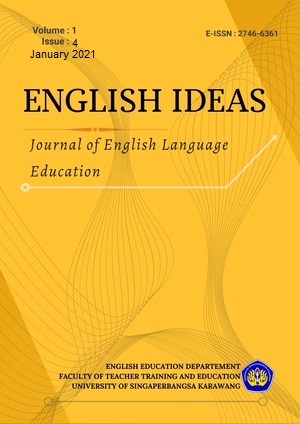Cultural Content Analysis of An English Textbook for Indonesian EFL Learners
Abstract
This study aims to investigate what culture is represented and how it is represented in English textbooks and textbooks for EFL students. This study uses content analysis as a research design. This study also adopts two frameworks from Cortazzi and Jin (1999) regarding types of culture to determine the dominant culture represented in textbooks and a framework from Moran (2001) to find out how cultural dimensions are presented in textbooks. The textbook analysis of the textbook reveals two main facts. The researcher finds that source culture dominates in this textbook. The results of the investigation found that the texbook contains 48.21% of source culture, 24.10% of target culture, 23.21% of universal culture and 04.48% of international culture. Regarding how culture is represented in textbooks, in general culture is represented by the person dimension (48.2%), the product dimension (33%), the perspective dimension (12.5%), and the practical dimension (6.2%). Apart from that, this study also found that there is an imbalance in quantity between the dimensions presented by culture. Consequently, this study suggests that English textbook writers should include a balanced presentation between Source Culture, Target Culture, and International Culture.
Keyword: cultural content analysis, dimension of culture, textbook analysis, types of culture



